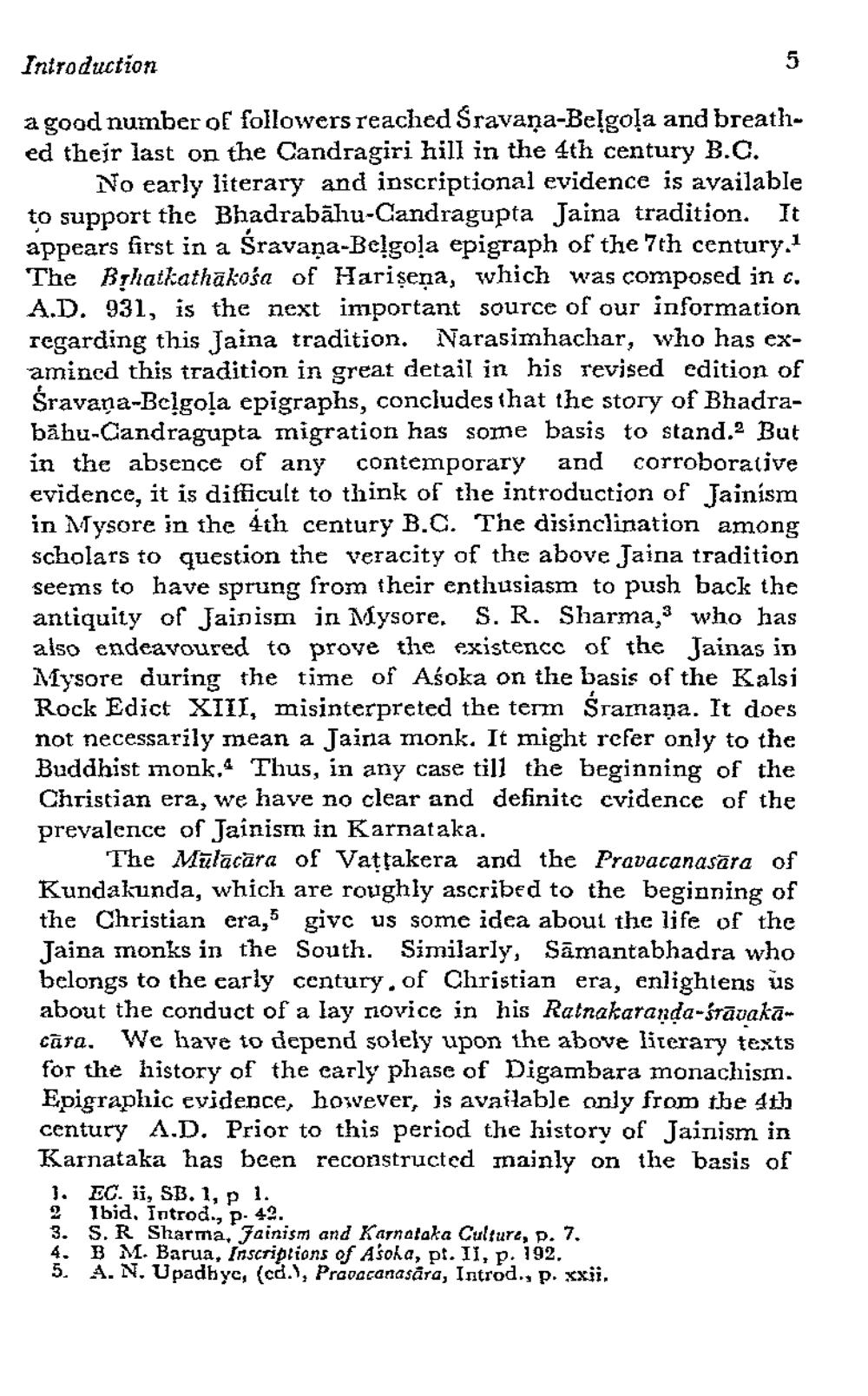________________
Introduction
a good number of followers reached Sravana-Belgola and breathed their last on the Candragiri hill in the 4th century B.C.
No early literary and inscriptional evidence is available to support the Bhadrabāhu-Candragupta Jaina tradition. It appears first in a Sravana-Belgola epigraph of the 7th century.1 The Bğhatkathakośa of Harişeņa, which was composed in c. A.D. 931, is the next important source of our information regarding this Jaina tradition. Narasimhachar, who has examined this tradition in great detail in his revised edition of Sravana-Bclgoļa epigraphs, concludes that the story of Bhadrabähu-Candragupta migration has some basis to stand.2 But in the absence of any contemporary and corroborative evidence, it is difficult to think of the introduction of Jainism in Mysore in the 4th century B.C. The disinclination among scholars to question the veracity of the above Jaina tradition seems to have sprung from their enthusiasm to push back the antiquity of Jainism in Mysore. S. R. Sharma, who has also endeavoured to prove the existence of the Jainas in Mysore during the time of Asoka on the basis of the Kalsi Rock Edict XIII, misinterpreted the term Sramaņa. It does not necessarily mean a Jaina monk. It might refer only to the Buddhist monk. Thus, in any case till the beginning of the Christian era, we have no clear and definite cvidence of the prevalence of Jainism in Karnataka.
The Malacāra of Vattakera and the Pravacanasära of Rundakunda, which are roughly ascribed to the beginning of the Christian era,5 give us some idea about the life of the
Jaina monks in the South. Similarly, Samantabhadra who belongs to the early century.of Christian era, enlightens us about the conduct of a lay novice in his Ratnakaranda-śrāvakacara. We have to depend solely upon the above literary texts for the history of the carly phase of Digambara monachism. Epigraphic evidence, however, is available only from the 4th century A.D. Prior to this period the history of Jainism in Karnataka has been reconstructed mainly on the basis of 1. EC. ii, SB. 1, p1. 2 Ibid, introd., p. 42. 3. S. R Sharma, Jainism and Karnataka Culture, p. 7. 4. B M. Barua, Inscriptions of Asoka, pf. II, p. 192,
A. N. Upadhyc, (cd.), Pravacanasära, Introd., p. xxii.
เว่




